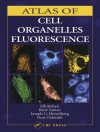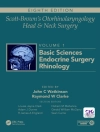During the early years of the AIDS epidemic, thousands of Americans became infected with HIV through the nation’s blood supply. Because little reliable information existed at the time AIDS first began showing up in hemophiliacs and in others who had received transfusions, experts disagreed about whether blood and blood products could transmit the disease.During this period of great uncertainty, decision-making regarding the blood supply became increasingly difficult and fraught with risk. This volume provides a balanced inquiry into the blood safety controversy, which involves private sexual practices, personal tragedy for the victims of HIV/AIDS, and public confidence in America’s blood services system.The book focuses on critical decisions as information about the danger to the blood supply emerged. The committee draws conclusions about what was doneand recommends what should be done to produce better outcomes in the face of future threats to blood safety.The committee frames its analysis around four critical area: Product treatment Could effective methods for inactivating HIV in blood have been introduced sooner? Donor screening and referralincluding a review of screening to exlude high-risk individuals. Regulations and recall of contaminated bloodanalyzing decisions by federal agencies and the private sector. Risk communicationexamining whether infections could have been averted by better communication of the risks.
Committee to Study HIV Transmission Through Blood and Blood Products & Institute of Medicine
HIV and the Blood Supply [PDF ebook]
An Analysis of Crisis Decisionmaking
HIV and the Blood Supply [PDF ebook]
An Analysis of Crisis Decisionmaking
قم بشراء هذا الكتاب الإلكتروني واحصل على كتاب آخر مجانًا!
لغة الإنجليزية ● شكل PDF ● صفحات 352 ● ISBN 9780309588270 ● محرر Lauren B. Leveton & Michael A. Stoto ● الناشر National Academies Press ● نشرت 1995 ● للتحميل 3 مرات ● دقة EUR ● هوية شخصية 7150300 ● حماية النسخ Adobe DRM
يتطلب قارئ الكتاب الاليكتروني قادرة DRM












